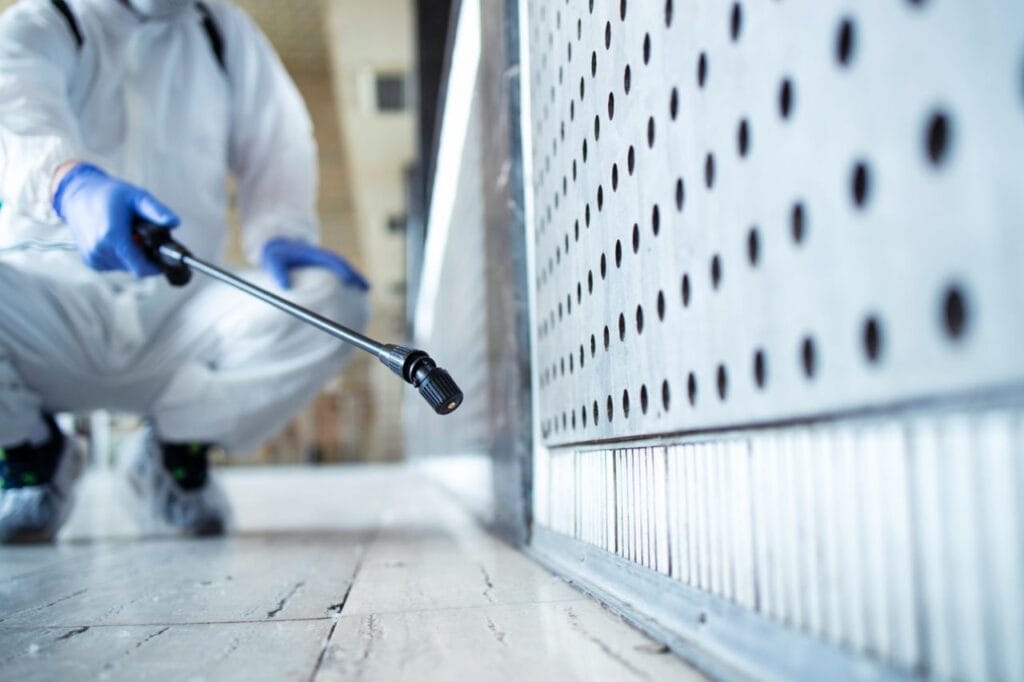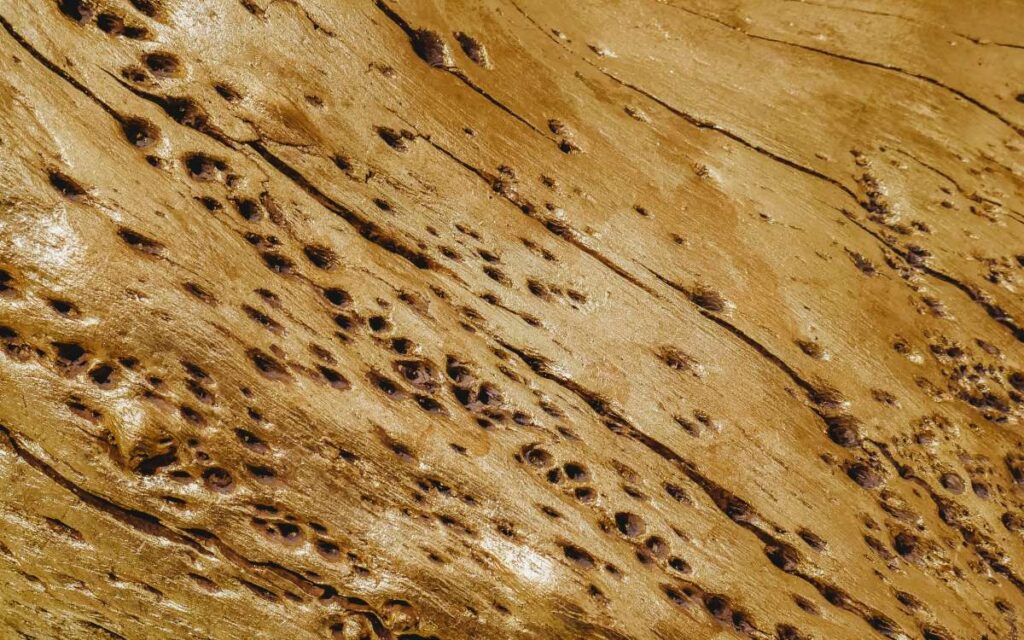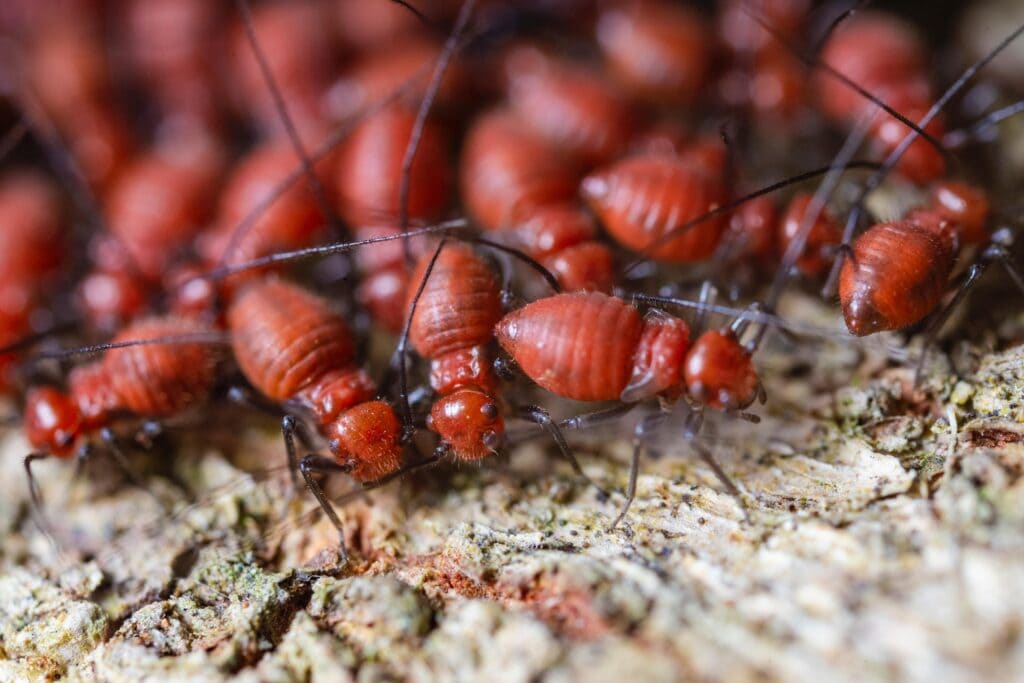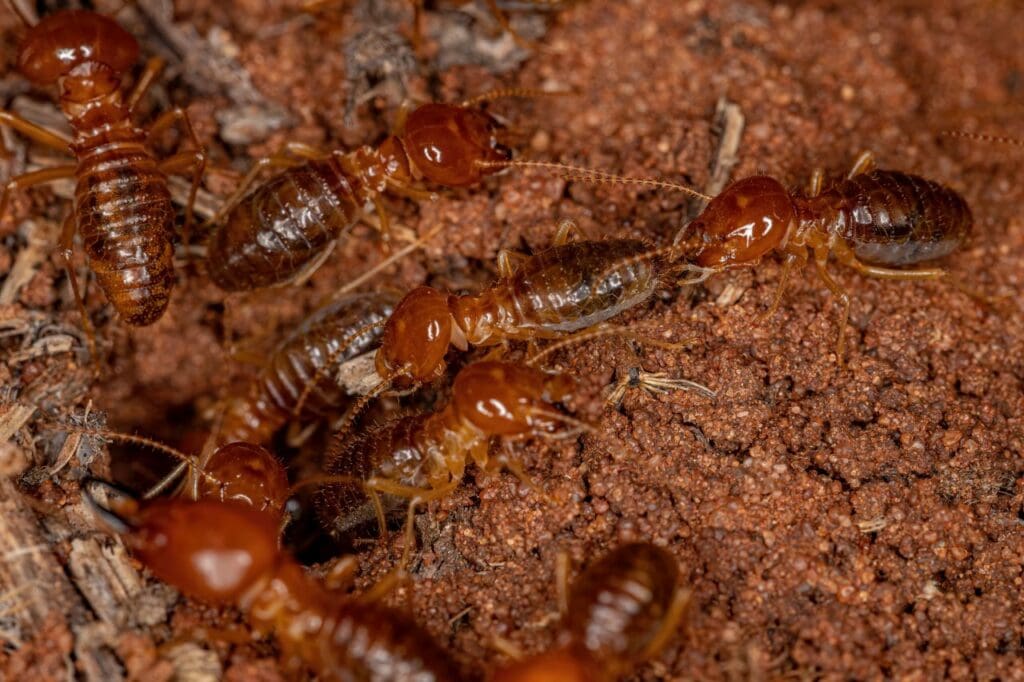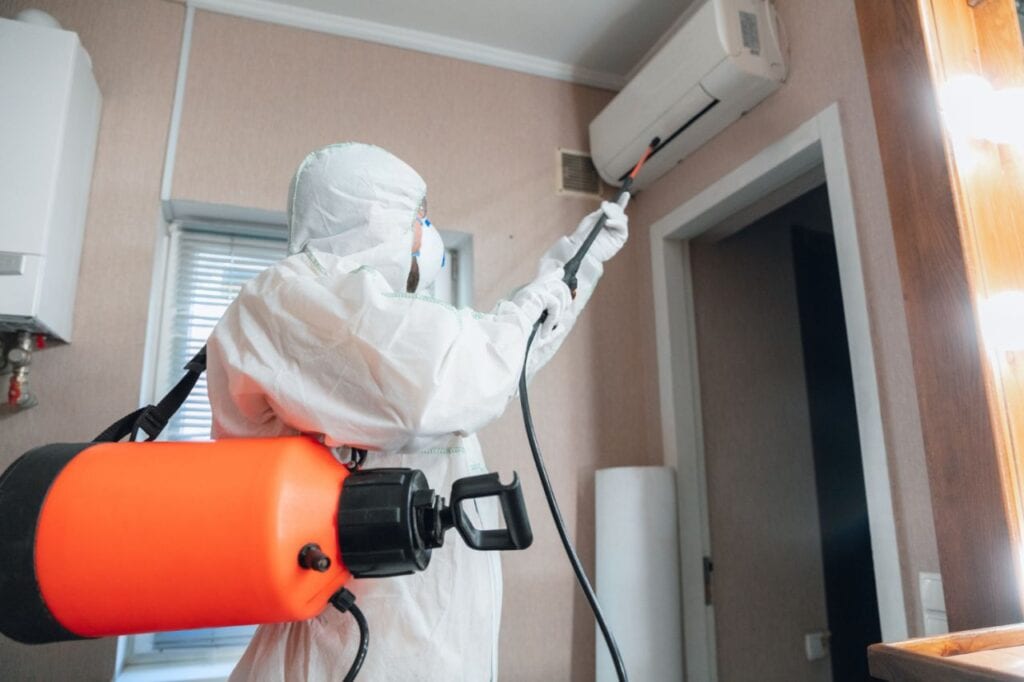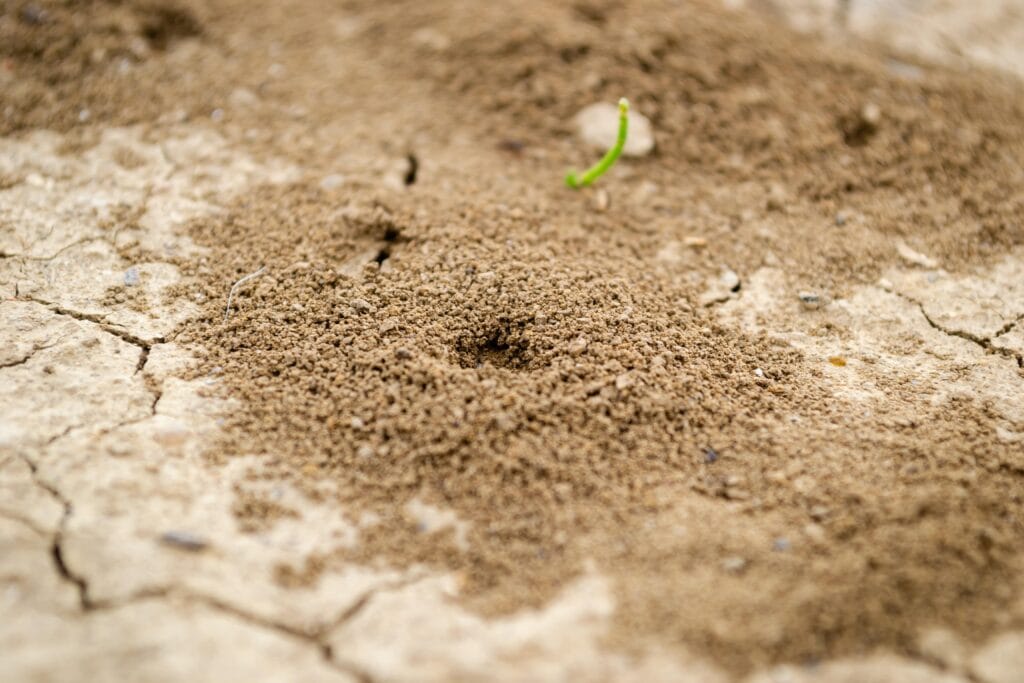Termites are a real problem for homeowners in Australia. These pests that are found in homes have the potential to completely ruin the property that you have laboured so hard to have purchased. Identifying their presence as soon as possible is crucial to prevent the issue from getting out of hand.
There are around 360 separate species of termites that can be found in Australia. Termites in Australia can be classified into three main species: subterranean, dry wood, and damp wood. If you are familiar with these pests, you will be better able to see them and take measures to avoid them.
You can safeguard your home by taking preventative measures; nevertheless, if the infestation is serious, it is advisable to hire a specialist. Because of their experience, you can locate the appropriate methods to eliminate the infestation.
Termite infestations can be prevented by taking preventative steps, which will be discussed in this guide. These actions will ensure that your home lasts long and maintains its structural integrity.
What Attracts Termites?
You must know what attracts termites to prevent them from entering your home.
- Termites are drawn to wood and other materials that contain cellulose or wood. You mustn't store such materials in close proximity to the foundation of your property.
- Crawl spaces and other dark, damp places are ideal for termites. Inspecting and evaluating your home for sources and solutions of moisture will help reduce moisture in crawl areas.
- Fixing any dripping faucets or pipes ensures that the soil adjacent to your home's foundation stays as dry as possible.
- Ensure that your gutters, downpipes, and splash blocks are in good working order so that excess water may be diverted away from the house's base.
- White ants have an addiction to damp wood. Ensure your home has adequate ventilation because too much moisture might stunt their growth and hunger. Humidity levels in most homes are higher than ideal, even if you can't feel it. Use a dehumidifier if this is an issue for you. Additionally, it will aid in preventing the growth of mildew and mould.
Signs Your Home May Have Termite Infestation
Termite damage could be present on your property if you discover any of these symptoms of termite damage.
Hollow Timber
Termites are capable of causing damage in an extremely short amount of time...
Termites in the house can be identified by their early warning signals, which include hollow and cracked timber. Make use of a screwdriver to tap the skirting boards, window frames, and architraves to determine whether or not there is a hollow or irregular sound. When hollowness is discovered, it is recommended that action be taken as quickly as possible.
Termite Nest
A thorough search in your yard and subfloor areas is important to determine if a mound nest is present. Finding the nest can solve all your problems; however, termite baiting is the best action if the nest cannot be found.
Mud Falls Into Walls
There is termite damage in the timber structure behind the gyprock. By merely beating against the wall, you can determine whether termites are operating within the cavities of your walls. The fact that there is a major termite infestation can be determined by the fact that you can hear the mud dropping into the wall hollow. On extremely rare occasions, they may even make noises to ticking vibrations within the wall.
Uneven Floor
The floor coverings should be examined for any discrepancies. It is important to investigate this area thoroughly since an uneven floor, especially one with an uneven line, could mean termites hiding underneath. To determine whether termites have caused damage to the subfloor, floor coverings should be raised or access gained to that area.
Mud In Timber Work Cracks
It is possible to prevent termite infestations such as this. If termites find a gap in the woodwork or skirting boards, they seal it to keep predators out. This is a surefire way to find termites in your house, and they also use it to control the temperature in their tunnels. Be careful not to touch any architraves, door frames, or windows that may have this muck on them.
Mud Tunnels
Performing routine inspections of the subfloor is of utmost importance. The termites construct tunnels to reach food sources beneath the earth's surface. The mud-like material these tunnels leave behind in your home's flooring creates uneven patterns. It is crucial to evaluate the subfloor region frequently, even if some areas can be hard to see. Termites love damp, dark places, so it's important to dry out the subfloor if you find any.
Termites In Garden
Termite infestation in the yard's timber. Having termites in the garden or yard of a building is a very good indicator that termites have attacked the structure inside the building. Due to the fact that the colonies are so close together, it is imperative that they be treated as quickly as possible. Termite inspections are of the utmost importance and should be carried out by a pest technician who is qualified in the field.
Termite Swarmers
The presence of swarmers indicates a highly infested area. When the weather is warm in the summer, you can witness winged termites (alates) congregating around lights. These signify that a nest is nearby, and the bees are trying to spread their wings and establish new colonies. Although they won't be able to consume your home directly, these termites will build new nests. Since they seldom stray too far from their nest, you should contact a specialist if you see one.
Simple Methods To Prevent Termites In Your Home
Finding termites on your beloved furniture, flooring, wooden beams, or any other fixture in your home can disrupt your sleep. Termites are annoying pests that can be difficult to eradicate, particularly from hard surfaces or objects.
Furthermore, most home insurance policies do not cover these pests, even though they inflict more damage on Australian households than natural disasters like fires, storms, and floods.
As a result, it is essential to have a professional pest control agency in Australia come and inspect any substantial woodwork or household objects regularly. Also, be aware of the warning indications of a termite infestation and take the necessary precautions immediately.
Industry experts put together this comprehensive guide to prevent termites from spreading in your house. It outlines eight simple steps you may take.
Keep Your Roof In Excellent Condition

Water and termites can easily enter your home when your roof tiles break. Termites thrive in damp environments. Those troublesome termites will be more prone to feast on damp, dark areas.
Therefore, it is essential to perform a visual inspection of your roof once every six months to guarantee that the tiles affixed to your roof are still in good condition. If your home has an attic, you should also look for indications of moisture there. It may spare you a lot of trouble.
Minimise Soil Contact
Through direct contact with the soil, termites can accelerate their journey from the ground to your home. Keep any cellulose materials, wooden furniture, or other things that termites chew up high to prevent this from happening. Encircle the lawn with little pebbles or a fence made of stainless steel mesh. Furthermore, never leave outdoor furniture on wet yard dirt, as this invites termites.
Avoid Landscaping Near Your House
A well-kept garden can enhance your home's aesthetic value, but it also has the potential to attract termites. Termites can enter your home by a direct channel provided by vegetation such as bushes, trees, and other vegetation. Ensure that the vegetation is kept clipped and that there is a buffer zone of at least two feet between your property and any foliage that may be there.
Chuck The Boxes
Use plastic containers that can be sealed rather than storing your belongings in cardboard boxes. These containers will not attract termites and will prevent your belongings from being wet due to any potential dampness that may be present.
Paper, a valuable food source for termites, is susceptible to harm if stored in a container that is not sturdy enough to hold it. It is important to keep in mind that removing termites is a far more involved process than merely adopting simple steps to prevent termites from entering your home.
Hire Termite Pest Control Services
A reputable pest control company should perform an effective termite inspection that satisfies Australian requirements if you suspect you may be infected. It would be best to never tamper with or underestimate termites since they wreak damage worth millions of dollars yearly.
Termites, frequently called white ants, produce extensive damage that goes unnoticed for a long time.
Having expert inspections performed regularly is always a good idea to avoid dealing with a significant and expensive issue in the long run. This will help prevent a termite infestation from occuring. Termites should not control your life.
Repair Leaks And Seepage
When there are leaks in the plumbing and seepage, the walls, ceilings, and rooms' flooring deteriorate and smell awful. The wetness that they generate in wooden, cardboard, and cellulose furniture and fixtures is another thing that attracts termites, which are insects that prefer to feed on soft materials.
Meet with a licenced plumber to solve the plumbing issue, and then have an Australian pest control professional check for termites.
Depending on the severity of the damage, the fixtures may need to be repaired or replaced. Therefore, wait until the damage management is finished before contacting a professional pest control service.
Remove Any Plants Near The House's Foundations
Sometimes, termites or even white ants can conceal their access holes in the vegetation or the tubes they utilise to navigate the house.
Ensure plenty of air circulation around your home to prevent moisture buildup. If you keep your home in good repair, termites will have a harder time getting inside. Sometimes, even something as seemingly insignificant as glossy paint might discourage termites. The smallest detail matters.
Improve Drainage
Termites will be drawn to the damp conditions of water pooling around your home's foundation. Inspect the home's drainage system to ensure it's doing its job and diverting water from the foundation. Grading your yard and installing downspout extenders are two ways to keep water from collecting around your home.
Remove Unwanted Wood From Your House
If you do not treat your garden's wooden elements and furniture, it will become a breeding ground for termites, even though it creates wonderful decorations. Therefore, if you use wood outside in your garden, transferring it a considerable distance from the house where you live is more convenient.
On the other hand, you might go with steel, which has the potential to stand the test of time even when exposed to the elements.
Schedule Pest Inspections Regularly
If you live in Australia, hiring a pest control service to regularly check your home for bugs is a good idea. If you happen to reside in a region that experiences frequent storms, high humidity, rainy days, etc., it is extremely important to schedule the termite inspection and treatment appointments promptly.
Termites will find your home appealing for a variety of environmental reasons. You should take preventative precautions to avoid dealing with termites after they've invaded your home.
Choose Pest Control
Installing a chemical termite barrier around your house can help prevent termite infestations. Experts will dig a trench around your property that is 300 mm wide. Spray the trench with liquid termiticide once you've dug it. A natural barrier will be formed. Incorrect installation of liquid termiticide poses health risks to humans, animals, and children. It is imperative that you choose an established company.
Remember that not all methods of warding off pests are created equal. Several considerations, like your home's location and construction type, will determine which solution suits your needs. Some are more successful than others. Regarding pest control, one cannot compare a house constructed on stumps to one with a concrete slab foundation.
Maintain As Much Of The House's Exterior As Possible
Infestations by termites are significantly less likely to occur in a regularly maintained house. Sometimes, even something as seemingly insignificant as glossy paint might discourage termites. The smallest detail matters.
These are the standard measures most people take to keep termites at bay. If you want to be sure everything is always okay, you should get a professional inspector to look it over periodically.
Cleaning Solutions With Essential Oils
Termites do not like the strong aromas of peppermint, cedarwood, clove, and germanium. Try combining cleaning products with a few drops of aromatic oils to prevent termites from entering your home and stop their spread.
Natural essential oils that do not include harsh chemicals can make your home smell pleasant. Therefore, they are a more effective alternative to using hazardous pesticides or insecticides to ward off termites and other pests.
Conclusion
Australia has a big problem with termites. There are about 360 species that are divided into three groups: subterranean, dry wood, and wet wood. Homeowners can avoid termite outbreaks by learning about how they behave and taking steps to stop them.
This is because termites like wood and things that contain cellulose or wood don't store things close to the base. Moisture sources should be cut down in crawl spaces and dark, damp places, and gutters, downspouts, and splash blocks should be in good shape. White ants are also drawn to wet wood, so making sure there is enough air flow and humidity is very important.
Termite damage can be seen in wood that is hollow or cracked, a termite nest in the subfloor, mud dropping into walls, floors that aren't level, and mud in cracks in the woodwork. Termites build holes to get to food sources below the ground's surface, so the subfloor needs to be checked often.
Should the infestation be very bad, it is best to call a professional to figure out the best way to get rid of it.
Finding and getting rid of termite infestations is important for keeping your home's structure in good shape. By taking these steps, you can help keep termites away from your home and protect their long-term health.
Termites can do a lot of damage to buildings and homes, especially in yards and parks. They can be found near swarmers, which are termites with wings that gather around lights to signal that a nest is close.
It's hard to get rid of these termites, and they can do a lot of damage to houses. To stop termites from spreading, make sure your roof is in good shape, keep the dirt away from your home as much as possible, don't put plants near your house, and use sealed plastic containers instead of cardboard boxes.
Termite problems are hard to get rid of, and most home insurance plans don't cover them. It is important to have a professional pest control company check any large pieces of wood or home items on a regular basis, and you should know the signs of a termite infestation. To get a termite check that meets Australian standards, you need to hire a pest control company with a good reputation.
Keeping termites out of your home is important if you want to protect it from long-term damage. Having a professional pest control company check for termites on a regular basis and knowing the warning signs can help keep them from doing a lot of harm.
Termites are insects that like soft materials and can be drawn to plumbing and furniture that leaks or seeps. To keep termites away, you need to fix leaks and seepage, get rid of plants near the walls of the house, make the drainage better, and get rid of any wood that you don't want. It is very important to have regular pest checks, especially in places where it storms, is humid, and rains a lot.
Putting up a chemical shield around the house can help keep them out, but you should make sure you hire a reputable company. Based on where the house is located and what kind of building it has, different ways of getting rid of pests may work better. Keeping up with the outside of the house can also help keep termites away.
Termites can also be kept away with peppermint, cedarwood, clove, and germanium essential oils. These natural essential oils can make your home smell nice and are a better way to get rid of pests and insects than harsh chemicals. To avoid termite infestations, it is important to have regular pest checks and keep your home clean.
Content Summary
- Termites in Australia can severely damage homes, making early detection critical.
- Australia hosts around 360 termite species, mainly subterranean, dry wood, and damp wood.
- Familiarity with these termite species aids in their identification and prevention.
- Professional help is advisable for serious infestations, despite available DIY measures.
- Termites are attracted to wood and cellulose materials.
- Storing such materials away from your home's foundation is essential.
- Dark, damp areas like crawl spaces are attractive to termites.
- Reducing moisture in crawl spaces helps prevent termite attraction.
- Fixing leaks and keeping soil dry near the foundation deters termites.
- Properly maintained gutters and downpipes prevent excess moisture near the home.
- Damp wood is particularly appealing to termites; ventilation and dehumidifiers can help.
- High indoor humidity levels, even if imperceptible, can attract termites.
- Signs of termite infestation include hollow timber.
- Early warning signals are critical, such as hollow, cracked timber.
- Tapping skirting boards and frames helps detect hollowness from termites.
- Finding a termite nest, particularly in subfloor areas, is a key indicator.
- Searching yards and subfloors for termite nests is crucial.
- Mud falling into wall cavities can indicate termite activity.
- Uneven floors may signal termites beneath the surface.
- Mud in cracks of timberwork suggests termite sealing efforts.
- Termites create mud tunnels to reach food sources.
- Routine subfloor inspections are vital to spot these mud tunnels.
- Termites in the garden indicate a high risk of house infestation.
- Termite swarmers, or winged termites, hint at a nearby nest.
- Swarmers suggest the establishment of new colonies.
- Regular professional pest inspections are crucial.
- Keeping the roof in good condition prevents damp environments that attract termites.
- Minimising soil contact with the house reduces termite access.
- Landscaping near the house should be managed to avoid termite entry.
- Storing items in plastic containers instead of cardboard deters termites.
- Hiring termite pest control services for regular inspections is advisable.
- Repairing leaks and seepage prevents termite-attracting dampness.
- Remove plants near the house's foundations to avoid concealed termite access.
- Improving drainage around the house foundation deters termites.
- Keeping wood away from the house reduces termite breeding grounds.
- Regular pest inspections are more crucial in humid, storm-prone areas.
- Chemical termite barriers can effectively prevent infestations.
- Professional installation of termiticide is important for safety.
- Pest control methods vary depending on the house's location and type.
- Regular maintenance of the house's exterior helps prevent termites.
- Professional inspections ensure comprehensive termite control.
- Essential oils in cleaning solutions can repel termites.
- Oils like peppermint, cedarwood, and clove are natural termite deterrents.
- Natural essential oils are a safer alternative to harsh chemicals.
- Termites' aversion to strong scents can be exploited in prevention.
- Awareness of termite habits and signs is key to early intervention.
- Professional pest control provides more effective solutions than DIY methods.
- Preventative measures are vital to maintain structural integrity.
- Termite damage can be extensive and costly if not addressed early.
- Consistent vigilance and preventive actions are crucial in termite-prone areas like Australia.
Frequently Asked Questions
Early detection is key. Look for signs like swarmers (winged termites) near windows, discarded wings, mud tubes along your home's foundation, and hollow-sounding wood. Identifying these signs promptly allows for proactive prevention measures.
Landscaping plays a vital role. Maintain a termite-free zone by keeping firewood, mulch, and wooden materials away from your home's foundation. Choose termite-resistant mulch and ensure proper drainage to eliminate moisture, creating an environment less favourable to termites.
Termites thrive in moist environments. Implement moisture control measures by ensuring proper ventilation in crawl spaces, promptly fixing leaky pipes, and using dehumidifiers if necessary. Eliminating excess moisture makes your home less appealing to termites.
When constructing or renovating, opt for termite-resistant materials. These materials act as a formidable barrier against termite intrusion, providing long-term protection for your home. Discuss termite-resistant options with your contractor during the planning stages.
Knowledge is a powerful prevention tool. Stay informed about termite behaviour, conducive conditions for infestations, and the latest advancements in termite prevention. Empower yourself to make informed decisions and enhance the effectiveness of your preventive measures.

